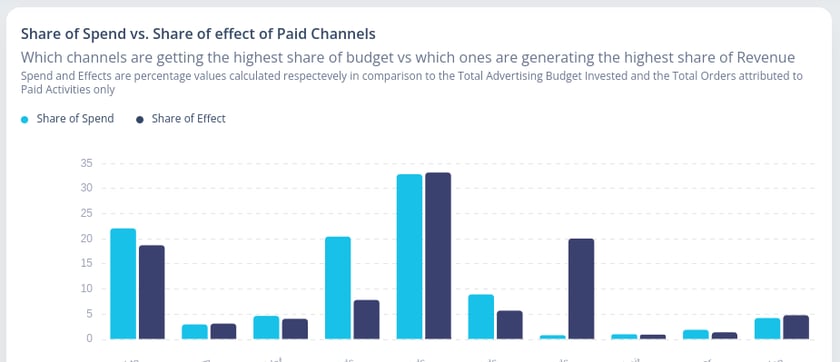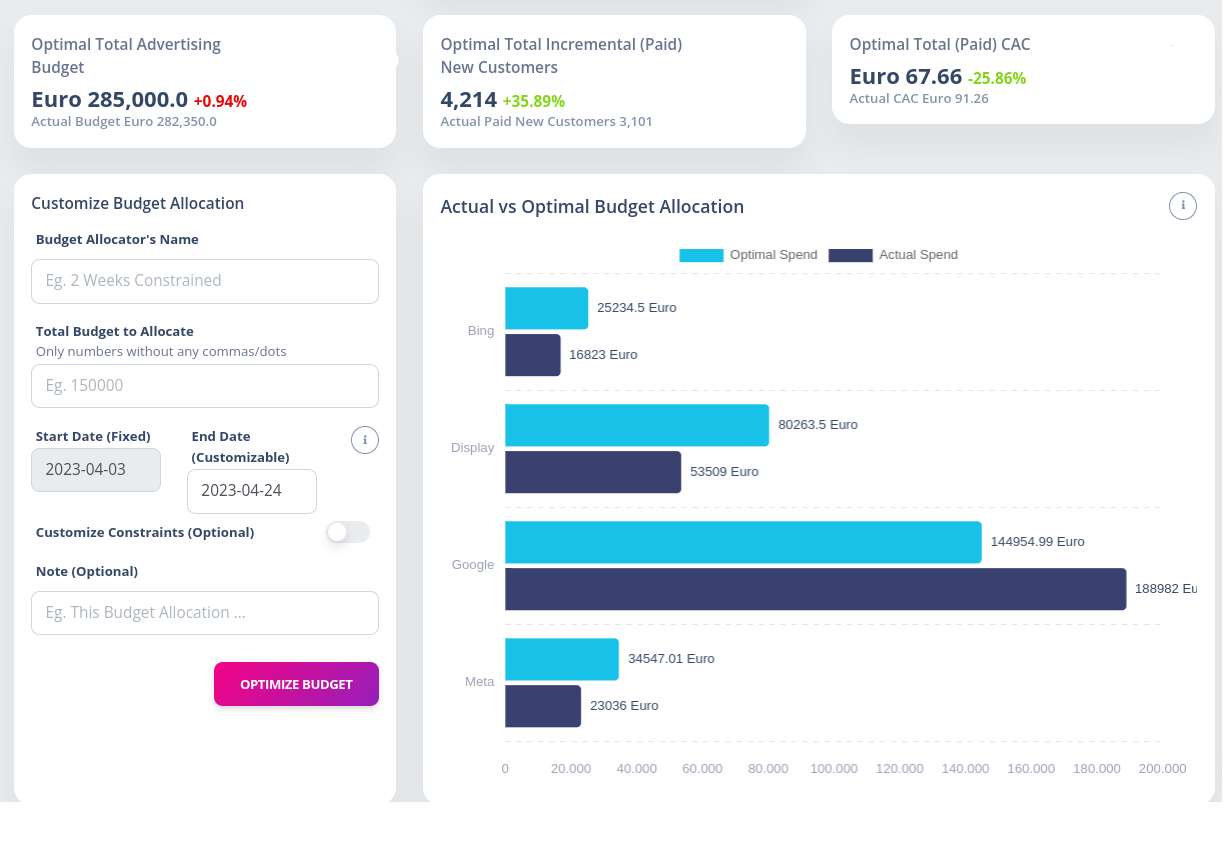Unveiling Marketing Mix Modelling: The Future of Marketing Measurement
Executives have always dreamed of a "single source of truth" to measure marketing performance and...
By: Johannes Fiegenbaum on 4/30/24 11:27 AM

Learn how to carry out marketing mix modeling with Cassandra. Ideal for entrepreneurs and start-ups who want to use their marketing budget more effectively.
Marketing mix modeling (MMM) is an analytical method that helps you measure the impact of your marketing activities on sales. It is based on the analysis of aggregated data collected from various marketing channels such as TV, radio, print, online and outdoor advertising. By analyzing this data, you can measure the impact of each marketing activity on sales and identify the optimal marketing mix. Alongside the CO2 footprint of your marketing mix, this is probably the most relevant lever in marketing at the moment.
I have reported on the exact technical background in this article: Marketing Mix Modeling: What it is and why MMM is the future.
Traditional tracking methods such as cookies and Google Analytics are now so severely restricted by data protection regulations such as the GDPR and technical limitations on the part of Apple that it is no longer possible to accurately measure marketing performance. Would you use Google Analytics 4 if it wasn't from Google and so closely tied to Google Adwords? I think not.
Also, Google Analytics is limited to short-term data. This limitation makes it difficult for you to truly evaluate the long-term impact of your marketing budget and make informed strategy decisions.
At this point, we should not forget to mention server-side tracking or the conversion API of online marketing platforms, a browser-independent way to identify user behavior and preferences across different devices and limit data loss. I have described exactly how this works in this article: Improving Event Match Quality and Optimizing Deduplication.
Marketing Mix Modeling, on the other hand, works without cookies, Google Analytics and user data.
Cassandra is a no-code tool for performing marketing mix modeling. It allows you to evaluate and optimize your marketing activities without the need for extensive data analysis skills. Cassandra offers free access for the first mix model.
Cassandra offers you a number of advantages when carrying out marketing mix modeling. The most important advantages include:
Before you can start modeling, you need to collect and prepare data from different marketing channels. This data should be aggregated and put on a consistent basis to enable comparisons between the different channels. Cassandra can use data from various sources, including online and offline marketing activities such as TV, radio and outdoor advertising.
In the best case scenario, you will have the spend data for each channel by week for the last year, alongside revenue or sales figures. You will notice that we do not need any data from Google Analytics for marketing mix modeling, but simple output data and absolute turnover/sales/registration data from the backend.
Sometimes it is also worth breaking down the channels even further and using the individual campaigns as weekly data points instead of channels.
Once the data has been prepared, you can start modeling. You can specify the country in which the budgets were spent and choose whether vacation periods and seasonal factors should be taken into account:

It is also useful to use the results measured by the channels as a calibration. I recommend using these figures with a confidence interval of 0.8, as the channels are not accurate due to the limitations mentioned.
Once these have been added, the first model can be calculated. This takes a few hours, as Cassandra calculates a large number of models.
After completing the first modeling, you can compare the best models:

The models in this example are already good. Often the accuracy of the first modeling is too low or the error rate too high. In this case, it is worth taking a look at Cassandra's recommendations to further improve the quality of the model. I am also happy to help you develop the best model for your company. Please get in touch with me: Contact.
Channels that do not make a significant contribution can already be eliminated. For example, it is often the case that a newsletter is dropped at this point or two campaigns on different platforms should be merged because they do not make a significant contribution on their own. Additional calibration data is also often a useful addition.
This requires several iterations of the model and takes some time, as Cassandra calculates a large number of models in the background and only displays the best five to ten at the end.
Cassandra ultimately enables you to identify the most effective marketing channels:

From this, you can already see which channels or campaigns brought the biggest bang for the given budgets. But it gets even more precise with Cassandra's Budget Allocator.
Cassandra's Budget Allocator allows you to determine the optimal marketing mix by running through various budget scenarios. You can use these to calculate the most efficient budget amount and distribution:

In this case, spend on Google should be significantly reduced and Display added, while Meta should also be slightly increased.
Cassandra also allows you to calculate the most efficient marketing mix for the next four weeks based on your chosen target ROI before you launch the campaigns. A recommendation can also be to reduce the budget overall, simply because the diminishing marginal utility of the current channels has already been reached. This can also be evaluated in detail:

In this case, even more budget can be placed before diminishing marginal utility occurs.
Cassandra is a powerful tool for carrying out marketing mix modeling. It allows you to measure and optimize your marketing activities without the need for extensive data analysis skills. By identifying the most effective marketing channels, determining the optimal marketing mix and predicting the ROI of your marketing campaigns, you can optimize your marketing strategy and increase sales.
I can help you develop the best marketing mix model for your business and optimize the effectiveness of your marketing budgets. I offer marketing mix modeling-as-a-service for this purpose. Please get in touch with me.

ESG & sustainability consultant specializing in CSRD, VSME, and climate risk analysis. 300+ projects for companies like Commerzbank, UBS, and Allianz.
More aboutExecutives have always dreamed of a "single source of truth" to measure marketing performance and...
Growth marketing can provide start-ups with targeted support to help them grow quickly, sustainably...
As a startup, it is important to have a successful marketing approach right from the start so that...